The Crucible - Act 1 Character Map
Aug 20
/
Matthew Gilfillan
"The Crucible" by Arthur Miller, a masterfully written play, written in 1953, is one that pulls us into the whirlwind of the Salem witch trials, and is taught to students around the world. In Act 1, intricate relationships and tensions are introduced. We've distilled these relationships in a character map for Act 1, exploring how the main characters of this act interrelate.
1. Reverend Parris and Betty Parris:
Reverend Parris, the spiritual leader of Salem, finds himself find himself conflicted between his position and his family when his daughter, Betty, falls into a mysterious illness. This ailment follows a clandestine forest gathering involving other girls and Tituba, Parris's Barbadian slave.

Interconnection:
The incident in the woods, spearheaded by Abigail Williams, becomes central to the unfolding drama and directly ties Parris's personal and professional life. Parris, already in a precarious position due to various disagreements with townsfolk, sees Betty's condition as a potential threat to his authority.
2. Abigail Williams and Reverend Parris:
Abigail, with a concealed past affair with John Proctor, is the niece of Parris and holds a manipulative sway over the younger girls, especially Betty.
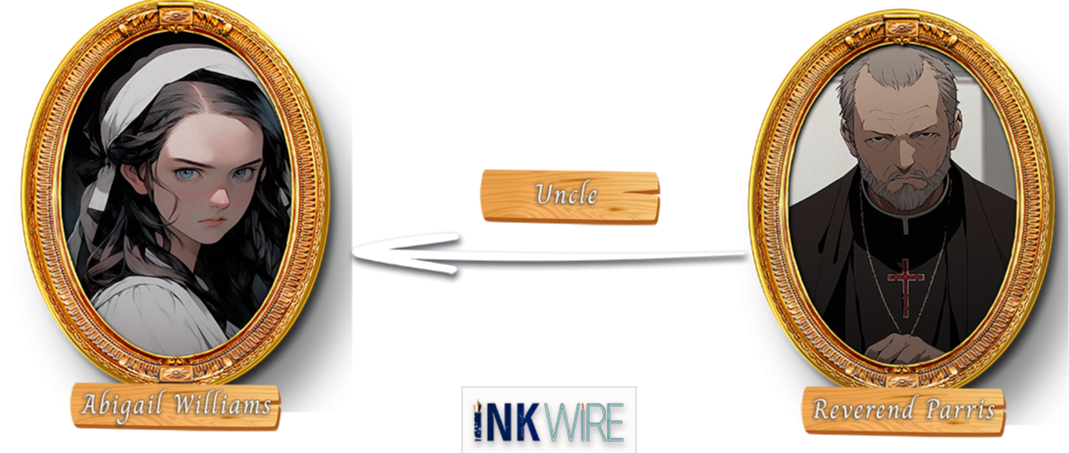
Interconnection:
While Parris worries about his reputation in Salem's tight-knit society, Abigail's actions, including the forest event, directly challenge it. Abigail, defiant and cunning, becomes the source of Parris's fears as she drives the narrative of witchcraft, pushing her uncle further into distress. The juxtaposition of her hidden desires and Parris's public reputation paints a volatile picture.
3. Tituba and Abigail Williams:
Tituba, Parris's slave, becomes a scapegoat when she's coerced into confessing to witchcraft after the forest incident.
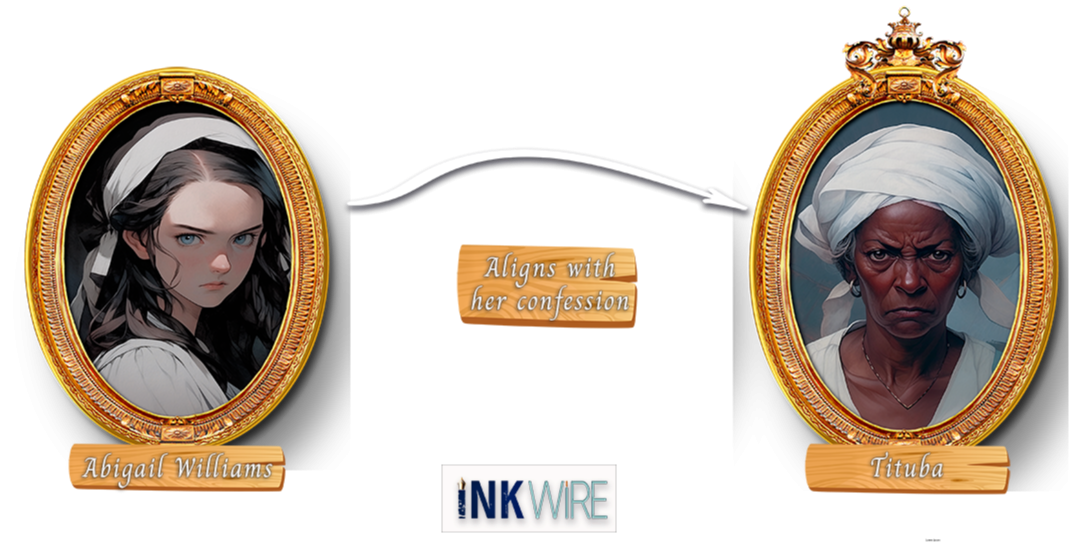
Abigail, seeing an opportunity, quickly aligns herself with Tituba's confession, furthering her own schemes and deepening Salem's witchcraft hysteria. When Tituba is accused, Abigail realizes the potential of naming witches as a way to divert blame and forward her own agendas. Their dynamic establishes a pattern of finger-pointing and fear that engulfs the community.
4. John Proctor and Abigail Williams:
John, a respected Salem farmer, grapples with his past indiscretions, particularly the affair he started with the young and ambitious Abigail.
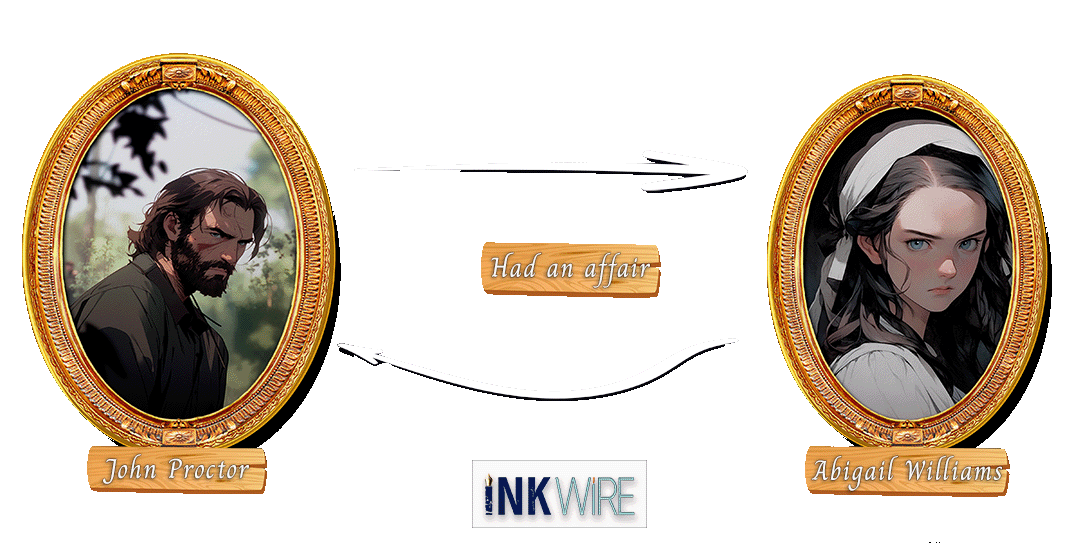
John, a respected Salem farmer, grapples with his past indiscretions, particularly the affair he started with the young and ambitious Abigail.
5. Elizabeth Proctor and John Proctor:
Elizabeth, embodying dignity and integrity, struggles with her husband's betrayal but seeks a harmonious family life.
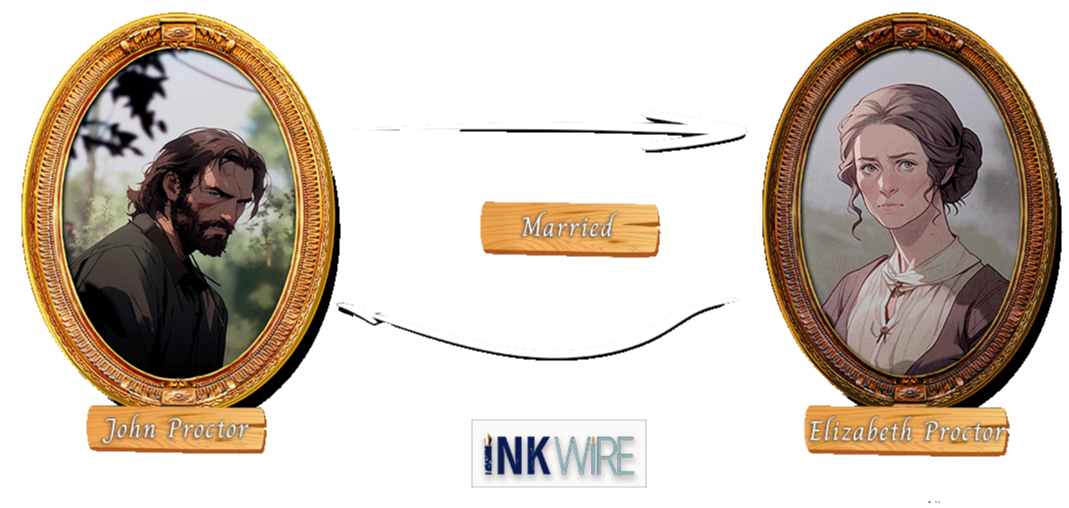
Their strained relationship, magnified by Abigail's intentions toward John, serves as a central conflict in the narrative. Elizabeth's suspicions about John's fidelity, coupled with her knowledge of Salem's tendencies for vengeance and superstition, create a delicate situation. She must tread the fine line between safeguarding her family and confronting Salem's growing madness.
6. Thomas and Ann Putnam with Reverend Parris:
The Putnams, driven by personal losses, started to strongly advocate for the witchcraft narrative, particularly pointing fingers at Rebecca Nurse

The Putnams, desperate for explanations for their personal tragedies, view the those accused of witchcraft as a means to assign blame. Their clash with Parris escalates as they, particularly Ann, grow convinced of the town's malevolence. Parris, on the other hand, is conflicted—caught between his skepticism and the mounting pressures from influential families and people like the Putnams.
7. Reverend Hale and Tituba:
Reverend Hale, an expert on witchcraft, enters Salem to ascertain the truth behind the claims and first interrogates Tituba.
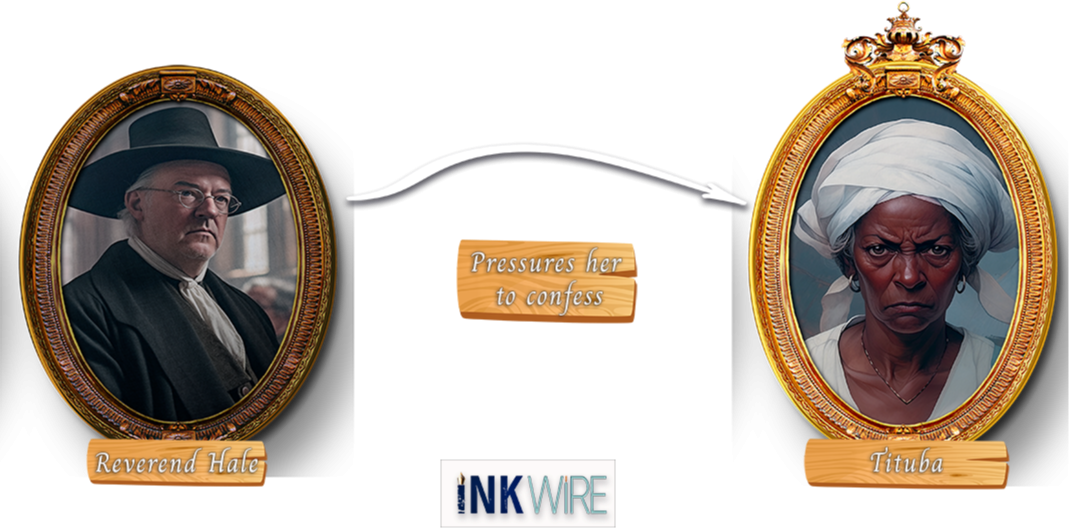
Hale's earnest quest to uncover the truth in Salem gets muddied when he encounters Tituba. Influenced by the town's anxiety and Abigail's manipulations, his interrogation of Tituba inadvertently provides legitimacy to the idea of witchcraft in Salem, which leads to more townsfolk being accused.
Through Act 1, Miller skillfully interlaces the destinies of these characters, paving the way for a harrowing exploration of jealousy, revenge, and superstition. Use our character map focused on completing Act 1 to navigate these various characters' intricate connections as you journey through this dramatic masterpiece.
We hope that this character map of the characters created by Arthur Miller is an informative and useful tool to keep you on track, and helps you remember the names of the characters as you read this scintillating play, which is enjoyed by millions of students in classrooms across the world.









